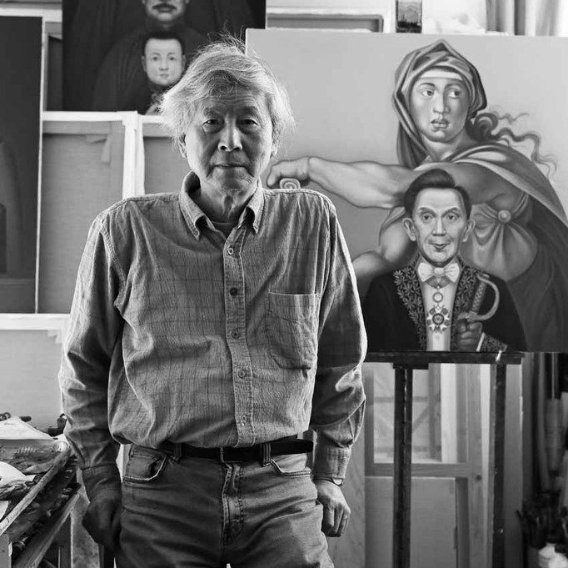Chen Ying-Teh

Between Silence and Structure: A Painting of Inner Space
A discreet yet profoundly singular figure, Chen Ying-Teh (born 1940) has, since the 1970s, developed a pictorial language where the rigor of Western composition meets the meditative sensibility inherited from Chinese tradition. Trained in Taiwan and settled in Paris in 1969, he belongs to that generation of artists from East Asia who found in the French capital not a model to follow, but a fertile ground in which to expand a deeply personal vision.
Born in an environment where industrial sites bordered agricultural fields, Chen Ying-Teh was early on exposed to the gestures of workers, farmers, and the anonymous figures of everyday life: an unassuming, silent humanity that permeates his works of the 1970s. Blue plays an essential role in these paintings. Drawn both from the “floral blue” of Chinese painting and the cobalt glazes of traditional porcelain, it becomes for Chen a space of projection, a way of suggesting distance, solitude, or inner vastness. In these canvases, often painted against the grain of the official imagery of Maoist China, the artist shapes a “blue China”, meditative and existential, where figures seem suspended between appearance and disappearance.
The themes he addresses during this period, workers, soldiers, infants, isolated portraits, now appear as early expressions of a visual vocabulary that many Chinese artists would revisit in later decades. Far from explicit political commentary, Chen offers a profoundly human perspective, transforming pictorial space into a locus of memory, quiet tension, and interiority.
Set apart from the more flamboyant aesthetics of his time, Chen approaches painting as an inner space, unfolding in layered strata where forms move between presence and withdrawal. His works from the 1970s and 1980s, rare on the market, reflect a moment of intense research: matte surfaces, silent color fields, verticals stretched like architectures, fragments of silhouettes or objects that emerge without ever imposing themselves.
What strikes the viewer immediately is the restraint: a minimalism without coldness, operating like a field of listening. Line, drawing equally on the Chinese brush and on European avant-gardes, plays a decisive role. It structures the canvas like a continuous breath, an inner rhythm that organizes the space without saturating it. Through this economy of means, Chen creates an atmosphere in which reality is transformed into a mental landscape.
This position between two worlds, the visual thought of the East and the modernity of French painting, gives his work a singular place. Neither narrative nor strictly abstract, his practice explores an intermediate state: a territory of signs, walls, shadows, thresholds, where the gaze circulates as if within a poem.
Today, the work of Chen Ying-Teh appears with renewed freshness. At a time when contemporary art revalues intimate practices, hybrid sensibilities, and intercultural dialogues, his painting offers a profound response: that of an artist who, quietly and steadily, has built an œuvre that is exacting, subtle, and permanently anchored in the history of perception.

